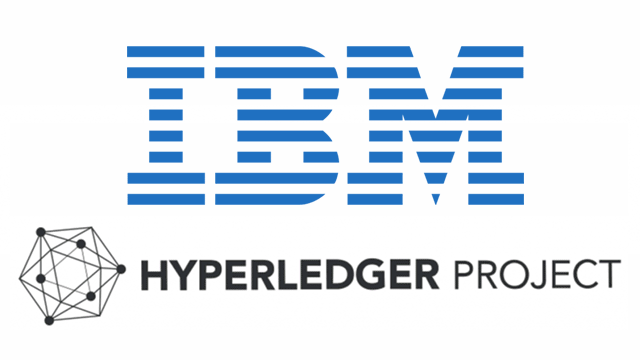Hyperledger Fabric: Industry Use Cases and Requirements

The Hyperledger Project has continued to garner interest across multiple business industries since the Linux Foundation announcement of the project in December last year. IBM contributed its Open Blockchain technology to Hyperledger’s Fabric. Its incubation is moving forward.
A panel led by IBM’s John McLean, Jerry Cuomo, John Wolpert, and Ramesh Gopinath discussed industry use cases for the Hyperledger Fabric during IBM InterConnect 2016 hosted is Las Vegas.
“Blockchain is not only about transactions and moving things around between separate entities. What it is about is reducing the energy required to create and grow business networks.”
—John Wolpert, Global Blockchain Products Director, IBM
Industry requirements for Hyperledger Fabric
With the introduction of Bitcoin in 2009, more and more business and industries are investing resources to figure out its underlying technology—the blockchain, a peer-to-peer distributed ledger technology with the ability to manage assets securely and efficiently. IBM improved on this with the Hyperledger Fabric by adding features to meet requirements for identity, auditability and privacy.
“There’s an assumption that blockchain is only looked at for financial services when really it’s starting to come up in broader industries.” —Jerry Cuomo, VP Blockchain Technologies, IBM
During the panel, four main patterns of customer adoption to Hyperledger Fabric were identified:
- Compliance ledger
- Ledger for compliance audit and risk
- Real-time view of key financial data
- Provenance immutability and finality are key
- Transparent access to auditor and regulator
- Consortium shared ledger
- Created by a small set of participants
- Share key reference data
- Consolidated real-time view
- High value market
- Sharing of information between participants
- Assets have informational, not financial value
- Provenance and finality are key
- Asset exchange
- Transfer of high financial value assets between many participants in a market
- Regulatory timeframes
- Requires all enterprise features of Blockchain
Industry use cases for Hyperledger Fabric
IBM has declared a set of abstract use cases which guides the development of the Hyperledger Fabric. These use cases define the initial requirements that need to be meet.
“We’re providing the ammunition and the tools for a business network to actually create and construct the perfect blockchain suitable for your business environment”
—John McLean, VP Global Blockchain Labs Engagement, IBM
There are currently three abstract use cases:
- Business contracts
- Privacy control for business-to-business contracts to protect sensitive information from outside parties that have access to the ledger
- Certain contracts should be easily discoverable by all parties on a ledger
- Asset depository
- Assets must be able to be dematerialized to allow direct access to all stakeholders and to allow them to initiate trades and acquire information
- Trading assets and accessing asset information should be done in near real time
- Stakeholders should be able to add business rules to any asset
- Asset creators must be able to make the rules associated with the trade of the asset in either public or private
- Supply chain
- The Hyperledger Fabric must provide all participants on a supply chain network the ability to input and track sourcing of raw materials, record parts manufacturing telemetry, track provenance of goods through shipping, and maintain immutable records of all aspects of the production and storage of a finished good through to sale and afterwards
- Similar to Business contracts and Asset depository use cases, the supply chain requires search functions with the ability to go back and forth through individual transaction layers
“There are some really simple use cases that fit naturally into blockchain like trade logistics.”
—Ramesh Gopinath, VP Financial Technologies and Blockchain, IBM
Questions and concerns
Most of the discussion revolved around questions and concerns from the participants regarding the Hyperledger Fabric, where it can be used and how is it different from the traditional blockchain.
These are some of the concerns raised during the panel:
Q: What is IBM’s strategy to deal with cases where too much information is entered since there is no deleting in blockchain?
A: There will be a set of best practices enforced to ensure data provenance and data privacy.
Q: Is blockchain a good tool for inventory management or will there be restrictions and/or complications in this matter?
A: The network scopes. We can start with treasury and get to inventory management. You can get to any business network from any business network.
Q: What are some of the scenarios and patterns seen in the insurance industry with the way blockchain is created?
A: Temporal liability. The Internet of Things and real-time conditions in the blockchain is especially important for insurance and logistics use cases.
Q: How does the idea of a shared ledger impact payment between two parties?
A: Currently, the blockchain is not here to replace mobile payment platforms and credit card payment platforms.
Q: In a banking perspective, how is blockchain compliance with regards to money transactions with questionable origins?
A: The problem with Bitcoin is the lack of association with an identity. With the Hyperledger Fabric, transactions and asset transfers are linked to a physical identity so it can be checked from there.
Q: For identification purposes, have you visualized a way for the blockchain to incorporate a government-issued digital certificate?
A: There is a definite possibility. Digital signatures and blockchain go hand and glove but we’ll have to wait to see what regulators say.
About the panelists

















